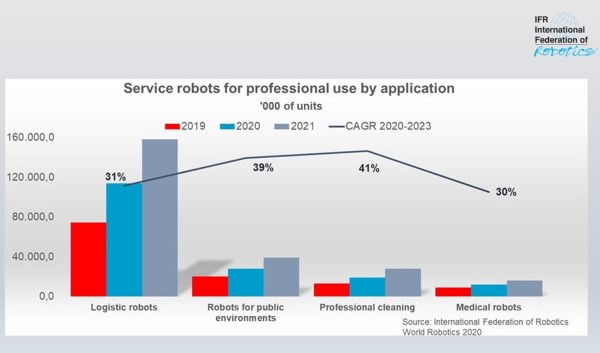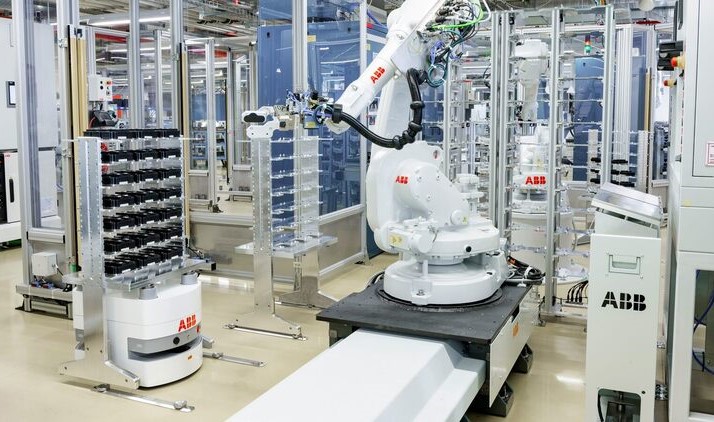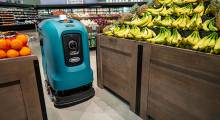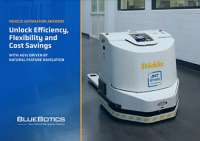While industrial automation in factories has been thoroughly studied, robotic mobility is also booming worldwide, according to the International Federation of Robotics. In its new research paper, “A Mobile Revolution,” the IFR predicts that unit sales of autonomous mobile robots, or AMRs, in the logistics sector will increase by 31% annually between 2020 and 2023.
The Frankfurt, Germany-based IFR was established as a nonprofit organization in 1987. It promotes research, development, usage, and global cooperation across the field of robotics and business and government. The IFR's more than 70 members come from the robotics industry, national and international associations, and R&D institutes from more than 20 countries.
“We aim at promoting the positive benefits of robots for productivity, competitiveness, economic growth and quality of work and life,” said the organization.
AMRs grow more capable
While researchers have worked on technologies for autonomous mobility since the 1940s, autonomous mobile robots have only become commercially viable over the past decade, according to the IFR report. This is primarily due to the availability of far more powerful and cheaper computing power, it said. This has led to rapid developments in sensor, vision, and analytics technologies, which enable robots to perceive and connect to their environments in real time.
Today, the AMR category shows double-digit growth, said the IFR. AMRs can navigate and perform functions autonomously in industrial and service sectors and are paving the way for mobile robot adoption around the world.
“Mobile robotics is a dynamic field of development, and we expect exciting advances over the next decade,” stated Milton Guerry, president of the IFR. “These advances will take place in both hardware and software. Mobile robots will become lighter and more flexible.”
“AMRs and service robots will be able to navigate in a range of indoor and outdoor environments more easily, as advances in sensors and software algorithms mean that navigation and vision become more and more precise,” he added.

Service robotics to grow 40%
In addition to AMRs in logistics, the IFR forecast that unit sales for mobile and service robots in public environments worldwide will grow by 40% per year.
“Mobile robots have traditionally operated in industrial settings to transport parts throughout the factory or feed machines,” said Guerry. “Today, AMRs also work in applications where contact with the general public is intended. They provide information to shoppers, deliver room-service orders in hotels, or support police officers by patrolling city areas. IFR´s mobile revolution paper gives an overview of the main use cases for mobile robots and their most significant impacts.”
Article topics
Email Sign Up





















